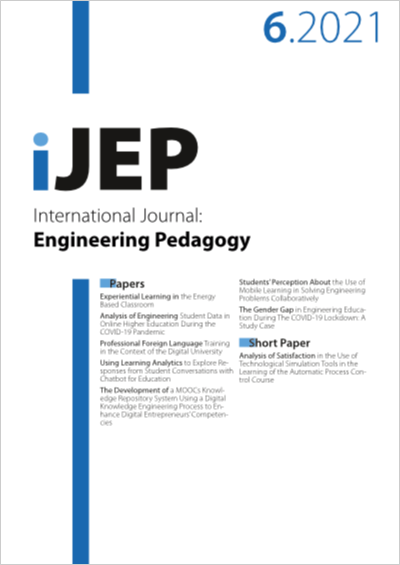Using Learning Analytics to Explore Responses from Student Conversations with Chatbot for Education
DOI:
https://doi.org/10.3991/ijep.v11i6.23475Keywords:
Chatbot, Explore, Conversation, Learning AnalyticsAbstract
Chatbot simulates humans' conversations through computer programs using natural language. They are developed for various reasons and purposes, such as virtual characters and entertainers or as an interactive game component. Nowadays, Chatbots for education are using widely to enable students to engage with learning content constantly. In this study, students use Chatbot to query the Web Programming learning contents such as code description, coding and problem-solving. However, the successful responses of Chatbot to student queries is unknown. The lecturers also do not know the desired learning content of students who use the Chatbot. Thus, the purposes of this study are to explore the probability of a student getting successful responses in each conversation and to identify the students desired learning content. The learning analytics method is used to analyse the learning data of Chat-bot. The data analysis performed is descriptive analysis and binomial probability testing. The finding of the studies showed that the value of successful responses of Chatbot is high. The most desired learning content by the students is related to three categories of Web Programming contents, which is the hypertext Preprocessor (PHP), database & structured query language (SQL) and hypertext markup language (HTML). The Chatbot is updated based on proposed actions to provide more successful responses.
Downloads
Published
2021-12-06
How to Cite
Wan Hamzah, W. M. A. F., Ismail, I., Yusof, M. K., Mohd Saany, S. I., & Yacob, A. (2021). Using Learning Analytics to Explore Responses from Student Conversations with Chatbot for Education. International Journal of Engineering Pedagogy (iJEP), 11(6), pp. 70–84. https://doi.org/10.3991/ijep.v11i6.23475
Issue
Section
Papers
License
Copyright (c) 2021 wan mohd amir fazamin wan hamzah

This work is licensed under a Creative Commons Attribution 4.0 International License.


